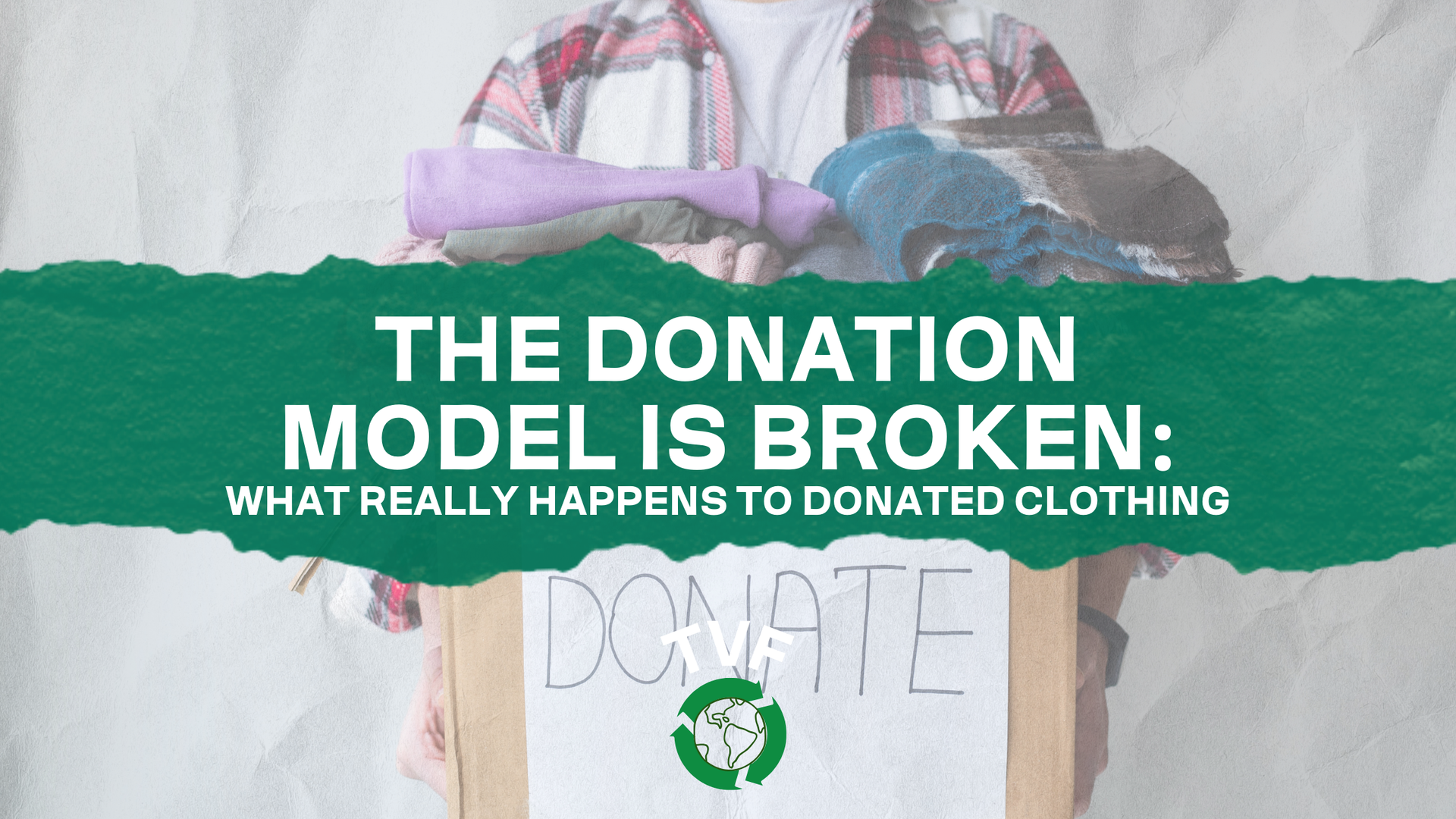
The Donation Model is Broken: What Really Happens to Donated Clothing
We’ve all done it. We bag up old clothes with the best of intentions, drop them off at a donation bin or a charity store, and walk away feeling like we’ve done something good.
But here’s the uncomfortable truth: most donated clothing doesn’t end up helping someone in need. In fact, much of it never even sees a second life. It’s buried. It’s burned. Or it’s shipped across the world, only to become another country’s waste problem.
The system that was supposed to create a feel-good loop of reuse is failing. Only about 15% of used clothing in the U.S. is reused or recycled—the remaining 85% ends up in landfills or incinerators. And globally, less than 1% is recycled into new garments.
If we really want to stop the cycle, we need more than donations. We need resale.
What We Think Happens
The cultural story around donating clothes goes something like this: you clean out your closet, donate gently used items to a thrift store or charity organization, and someone who needs those clothes will pick them up at an affordable price. Everyone wins.
And sometimes, that does happen.
But for the most part, the system can’t keep up with the volume. There’s simply too much clothing. The average American throws away over 81 pounds of clothes per year. Multiply that across tens of millions of people, and you begin to see the scale of the problem.
Thrift stores and nonprofits can’t sell it all. Even if they wanted to, there’s not enough retail space, demand, or labor to process the avalanche of clothing coming in.
What Actually Happens
Here’s a rough breakdown of where donated clothing goes:
-
10–20% is sold in local thrift shops.
-
40–50% is packed into bales and exported to other countries, mostly in the Global South.
-
30–40% is deemed unsellable and is either incinerated, landfilled, or turned into industrial rags or insulation.
Let’s break that down further.
1. Sold Locally (The Minority)
Only a small fraction of clothing donations actually make it to the racks of your neighborhood thrift store. These are the cleanest, trendiest, and most sellable items. Even still, they often sit unsold for weeks before being pulled and redirected elsewhere.
2. Exported to the Global South (The Majority)
Most of your donated clothes don’t stay in your community. They’re sold by the pound to clothing graders who sort, package, and export them in bulk to countries across Africa, South Asia, and South America. Once there, they flood local markets with cheap secondhand fashion.
This isn’t as good as it sounds.
In many regions, this practice has crippled local garment industries and created massive waste management issues. Tons of unsellable clothing are dumped in open-air landfills or left to rot in waterways, deserts, and roadsides.
3. Landfilled or Burned (The Invisible Outcome)
A shocking portion of clothing—especially low-quality fast fashion—doesn’t even make it past the donation warehouse. It’s labeled as trash and either sent straight to landfills or incinerated.
According to the EPA, in 2018 alone, 11.3 million tons of textile waste were landfilled and 3.2 million tons were incinerated in the U.S. Burning clothing releases toxic chemicals. Landfilling it means those synthetic fibers will shed microplastics and take hundreds of years to decompose.
Why This Happens
This isn’t about bad intentions. It’s about a system that’s overloaded and outdated.
-
Too Much Volume: We donate far more than can be reused.
-
Poor Quality: Fast fashion is often too flimsy or damaged to be resold.
-
No Recycling Infrastructure: Globally, less than 1% of clothing is recycled into new garments, due to fiber blends and lack of scalable tech.
-
Profit Motives: Many major "charitable" donation organizations operate as for-profit entities or partner with them, prioritizing revenue over responsible distribution.
So What’s the Solution? Resale.
Secondhand resale isn’t just an alternative—it’s the fix.
Instead of pushing clothes into a donation system that can’t handle them, we need to keep clothing in circulation intentionally and strategically. That’s what resale does.
Resale creates a direct path between a used garment and its next life. No export dumps. No false recycling promises. Just clothes, bought and sold by people who understand their value.
Why Resale Works:
-
It’s selective. Resellers source what they know will sell, reducing waste.
-
It’s local. Resale thrives in real communities and online marketplaces, cutting down on shipping and wasteful distribution.
-
It’s visible. Customers can see, touch, and understand what they’re buying—there’s no “black box” like there is in donation centers.
-
It values what already exists. Instead of tossing aside clothes because they’re not brand-new, resale celebrates their quality, character, and history.
The Power of the Reseller
If you’re a reseller, you’re doing more than making money—you’re interrupting the cycle. You’re keeping clothing in use. You’re curating a better system. You’re reducing the demand for new production by putting existing garments back into the hands of people who want them.
In a broken donation model, resellers are the solution-makers.
You’re what makes secondhand work, not just in theory, but in practice.
In Closing
Donating clothes feels good. But it’s not enough. Not anymore.
We have to be honest about what happens when we offload our clothing and call it charity. Without accountability, most of those items end up as pollution. Only resale ensures that secondhand clothing is actually worn again.
The donation model is broken. Secondhand is how we fix it. Not by hoping clothes find a new home—but by making sure they do.
